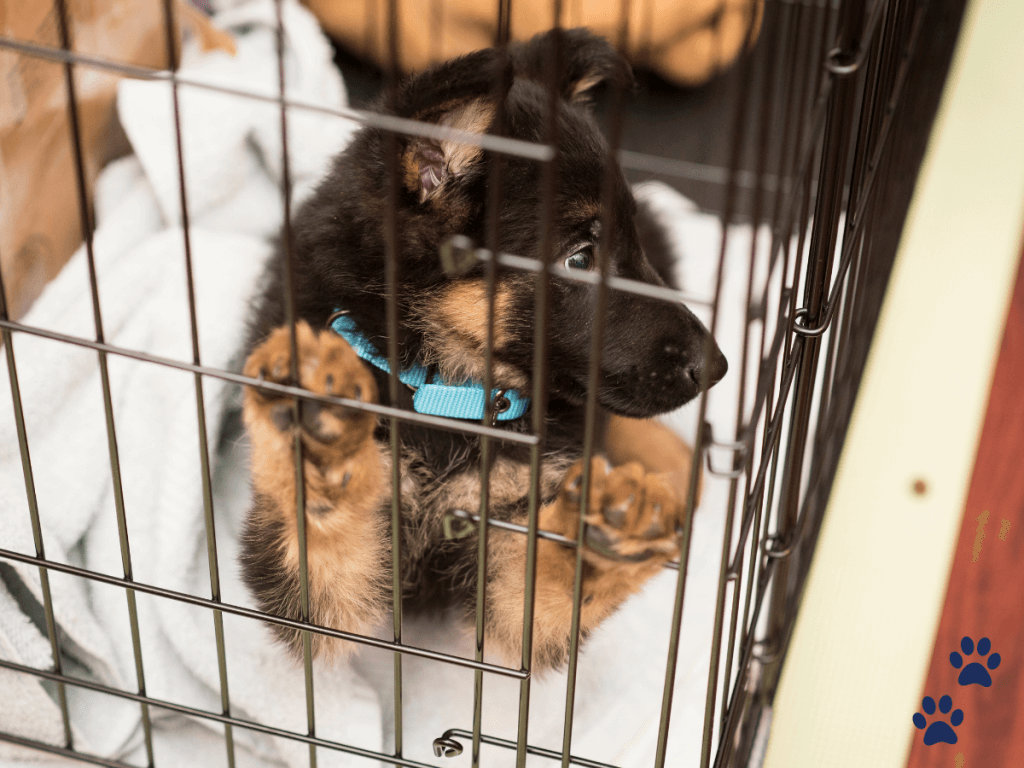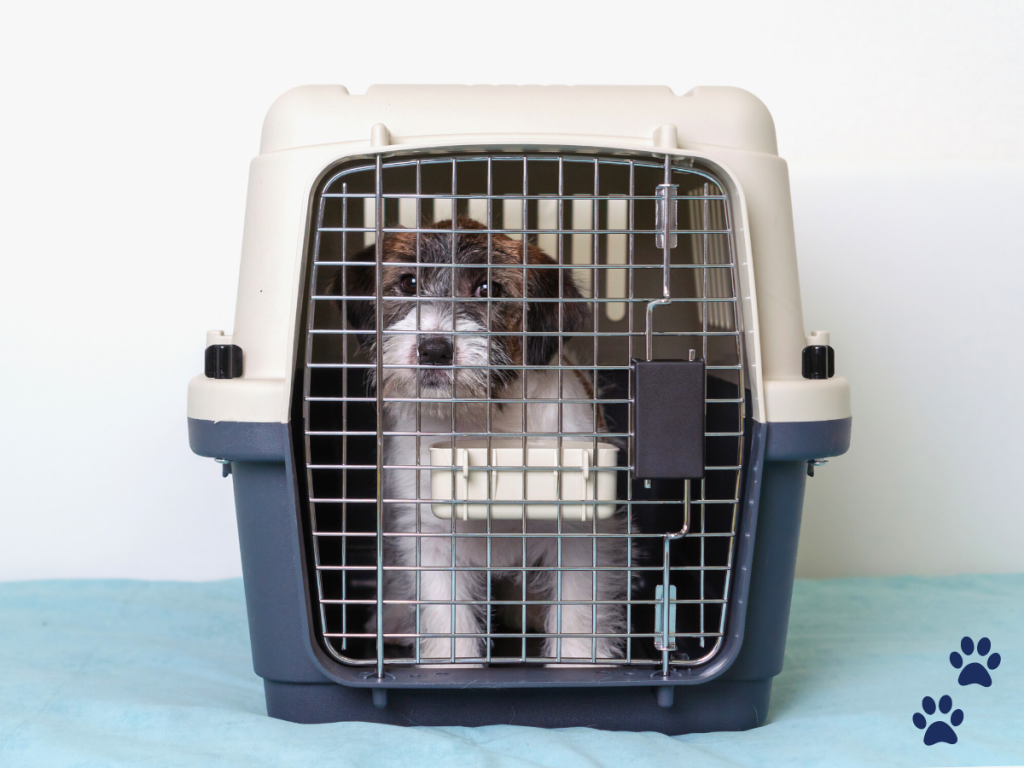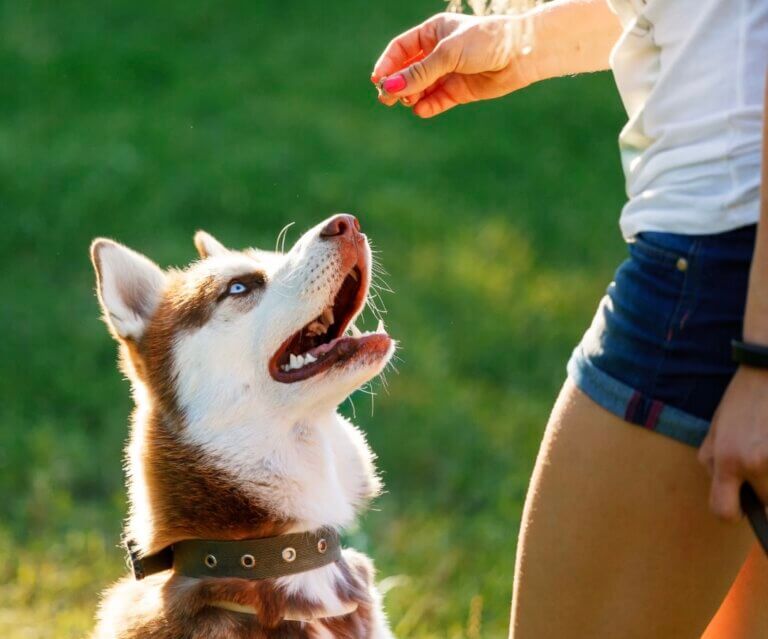Crate training your puppy can seem a little overwhelming, but it’s not as bad as it seems.
In this blog post, we will look at some of the benefits of crate training your puppy by going over the basics.
So you’ll learn what you need to know and how to make it work.
Let’s get started!
Benefits of crate training your puppy
There are a ton of advantages to crate training your puppy. Here are a few of them:
It can help with potty training
If you have a young puppy, they may not be able to hold it for very long.
So having a space for them to stay in will help keep accidents minimum.
It provides a sense of security
Your puppy will feel more secure and relaxed in his crate because it will be his own space.
Even if you’re away from home, he’ll have a place to go where he feels safe.
It can help with separation anxiety
Crate training can help your puppy get used to being away from you and help reduce his anxiety.
We talked about it in a previous blog post, which you can check out on our site.
It can prevent chewing and other destructive behaviours
If you’re not home to supervise, a crate can prevent your puppy from chewing on other things he’s not supposed to.
If your dog is inside his crate, he can’t destroy any of your belongings.
It can help with travel
If you need to take your puppy on a trip, crate training will make it a lot easier.
It’s because your dog will be used to being in his crate and won’t be as stressed out when he’s in a new place.
Introduce Your Puppy To The Crate

The first step of Crate Training is to introduce it to your dog gradually.
You need to make sure that the crate is the right size for your puppy and that it is comfortable.
Put some blankets or towels in the crate so that your puppy has a soft place to lie down.
You may also want to make crate training enjoyable by putting a toy or treat in the crate so that your puppy associates it with positive experiences.
Allow your puppy to explore the crate on their own and get used to it.
The Basics Of Crate Training
Once you have introduced your puppy to the crate, it is time to start the crate training process.
You can start feeding them in the crate because this will also create a positive association.
The general recommendation is not to put your puppy in the crate for long periods at first.
When you are first starting, let there be a few days between crate training sessions so that your puppy doesn’t get overwhelmed.
Start with 5-10 minutes and gradually increase the time as your puppy gets more comfortable.
And don’t forget to praise and reward your puppy when they do well.
Now, let’s go over these frequently asked questions about the basics of Crate Training.
“Is It Ok To Crate A Puppy At Night?”
It is perfectly fine!
In fact, we recommend getting your puppy used to being in the crate for long periods of time.
Consider doing the training during the day and then slowly increasing your puppy’s amount of time in the crate at night.
That way, they can get used to the crate and be more comfortable.
“How Long Do You Let A Puppy Cry In Crate?”
Most of the time, they cry because they need to go to the bathroom.
If you put them in the crate and start crying, wait a few minutes to see if they settle down.
If they don’t, then take them out and try again later.
Never leave your puppy in the crate if they cry hysterically because this will only make the crate training process harder.
You want to make sure that the crate is a positive experience for your puppy, so as much as possible, avoid letting them cry for too long.
Tips for making the training process easier
To make the crate training process go more smoothly, here are some of the things you need to remember:
Don’t make it a punishment
Crate training should never be used as a punishment.
If you don’t want your puppy to hate the crate, you should avoid punishing it every time it goes inside.
Be patient
Crate training takes time and patience.
Don’t get discouraged if your puppy doesn’t take it right away.
You see, your puppy can only be as good as you train him to be.
Reward good behaviour
It means to make it a positive experience. As mentioned, it’s important to reinforce or reward your puppy when they demonstrate good behaviour.
This could be in the form of treats, toys, or even just verbal praise.
Keep a schedule
Every pet owner should be aware that practice and consistency are required in all phases of dog training to set them up for crate training success.
It means you must adhere to the plan, instructions, and rewards so that your puppy knows what to expect.
If you’re not, then your puppy will get confused and will make it harder for both of you.
Remember this: Generally, puppies should NOT be kept in a crate for more than 4 hours at a time.
You may need to put them for shorter periods at first and gradually increase the amount of time as your puppy gets used to it.
Get help if needed
Since crate training is an essential step in a dog’s development, it’s something that all dog owners should be aware of.
It would be best to seek help from professional trainers.
So if you’re struggling with crate training, you can get started by getting a free consultation and trial with us. We help with obedience training, and our puppy school can help set your puppy up for success.
We will be more than happy to help you and your puppy through this process!

Conclusion
So, there you have it!
These are the most important things you should know to set your puppy up for success in crate training.
When it comes to crate training your puppy, it’s not as hard as it may seem, and with a bit of patience and perseverance, you should be able to get your little one trained up in no time at all.
What was your biggest takeaway from this blog post?
Let us know in the comments below!

